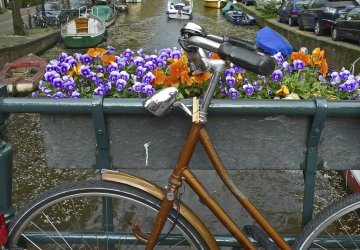
Using sensor technology is a hot topic in the field of Facility Management. When installed and maintained correctly, sensors can provide organizations with information on buildings and assets to help improve maintenance, scheduling, and more. A great example of the benefits of sensor technology is the way it’s transforming how people can use and interact with bicycle parking facilities and bicycle docking stations.
Where do we leave all these bicycles
Bicycling is a great form of transportation, whether you’re on your way to school, work, the train station, or just out enjoying the weather. In the Netherlands, a record of almost 22.5 million bikes were out and about last year. That’s an average of 1.3 bikes per Dutch resident, and according to Statistics Netherlands (CBS), an average of 560 miles is ridden per bike each year. Of course, all these bikes have to be parked somewhere, and in some places, such as Amsterdam Central Station, there are huge bicycle parking facilities that can house up to 10,000 bikes. Installing sensors in each parking spot would allow users to find free space through kiosks at the entrance of the lot and reduce unnecessary searching, blockages, and frustrations when parking. In fact, a colleague of mine said sensor technology similar to this in a car garage helped save her Christmas dinner.
In the United States, it’s less common to bicycle to work, but there’s still an avid culture of cyclists around universities and in larger, more walkable cities. For instance, in Boston there are public bike share systems like Hubway popping up across the city, which allows pedestrians to rent, ride, and dock a bicycle on a whim at multiple stations across the city. So, you can effectively get across the city by bicycle without even owning one. Sensor technology connected to an online map allows Hubway employees and users see where bicycles and free spots are distributed across the city’s many docking stations, so everyone always has access to what they need, especially during rush hours.
Maintaining your sensors to ensure accurate data
What many people tend to forget is just like any other form of assets, sensors need regular maintenance too. If they become dirty or damaged they might deliver unreliable signals. A sensor can certainly indicate whether a space is occupied, but not whether the sensor is dirty or damaged. This might cause the information boards to indicate that the facility is full, even though plenty of spaces are still available.
The same applies to sensors. Introducing them yields many benefits, but they only work on managing a bike park if you also set up a regime for maintaining them. If that doesn’t happen, a pile of money has been invested in a system that will not keep working. No matter how useful this technology might be, for the longer term maintenance is a must.




















